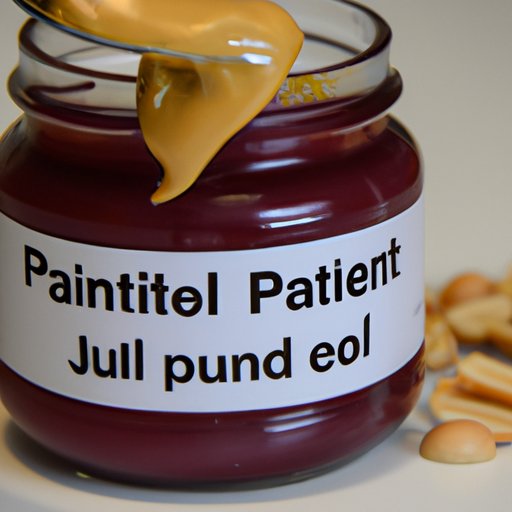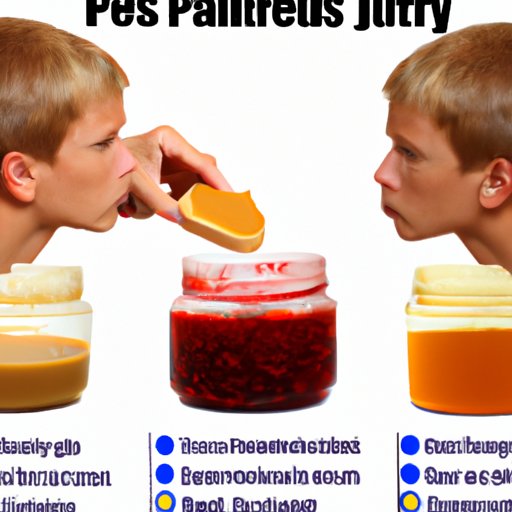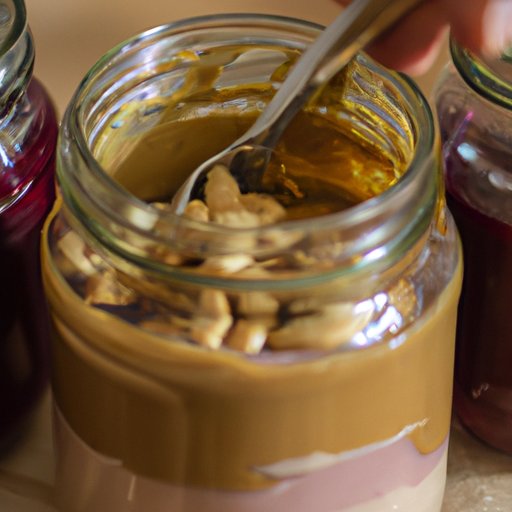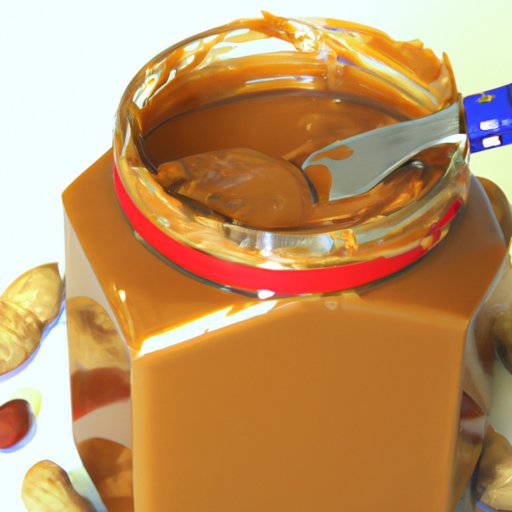Introduction
Peanut butter and jam, also known as PB&J, is a classic sandwich combination that has been beloved by children and adults alike for generations. It’s easy to make, simple to store, and can be enjoyed in a variety of forms, from traditional sandwiches to oatmeal, pancakes, and more. But when it comes to health, is peanut butter and jam a good choice? In this article, we’ll explore the nutritional benefits and potential risks of peanut butter and jam to help you make an informed decision about its health value.

Exploring the Nutritional Benefits and Potential Risks of Peanut Butter and Jam
When it comes to nutrition, peanut butter and jam can offer some benefits. Peanut butter is a source of plant-based protein, healthy fats, and various vitamins and minerals. Jam, on the other hand, is generally made with fruit, which can provide beneficial nutrients such as vitamin C. However, there are also some potential risks associated with eating peanut butter and jam. Peanut butter is high in calories and fat, while jam is often high in sugar. Additionally, some brands of peanut butter and jam contain added ingredients that can be unhealthy.
A Comprehensive Look at Peanut Butter and Jam’s Nutritional Content
Let’s take a closer look at the nutritional content of peanut butter and jam. When it comes to macronutrients, peanut butter is mostly composed of fat (about 16-20 grams per 2 tablespoons) and protein (about 8-10 grams per 2 tablespoons). As for jam, it typically contains small amounts of fat and protein, but is primarily composed of carbohydrates (about 20-25 grams per 2 tablespoons).
In terms of vitamins and minerals, peanut butter is a good source of vitamin E, magnesium, phosphorus, zinc, and folate. Jam is a source of vitamin C, though the amount can vary depending on the type of fruit used. Both peanut butter and jam are low in sodium and cholesterol.
Finally, when it comes to calories, peanut butter is higher in calories than jam (about 200 calories per 2 tablespoons compared to 50 calories per 2 tablespoons).

Examining the Health Effects of Peanut Butter and Jam Consumption
Given the nutritional content of peanut butter and jam, what are the potential health effects of consuming these spreads? One potential risk is weight gain. Peanut butter is higher in calories and fat than jam, so it’s important to watch portion sizes and be mindful of how much you’re eating. Additionally, the high sugar content of jam may contribute to weight gain over time if consumed in excessive amounts.
There is also some evidence that consuming peanut butter and jam may increase the risk of heart disease. Studies have shown that diets high in saturated fat and sugar may raise levels of “bad” cholesterol in the blood, which can lead to an increased risk of heart disease. Additionally, peanut butter and jam may increase inflammation in the body, which can further increase the risk of heart disease.
Finally, peanut butter and jam may also increase the risk of diabetes. Research has shown that diets high in sugar and saturated fat can contribute to insulin resistance and type 2 diabetes. Additionally, peanut butter and jam are usually high in calories, which may lead to weight gain and an increased risk of diabetes.
Comparing the Health Value of Peanut Butter and Jam to Other Spreads
When it comes to choosing a healthy spread, how does peanut butter and jam compare to other options? From a nutritional standpoint, peanut butter and jam are similar to other spreads such as cream cheese, butter, and margarine. All of these spreads are high in fat and calories, and most are also high in sugar. However, peanut butter does have the advantage of being a source of protein, vitamins, and minerals.
If you’re looking for a healthier alternative to peanut butter and jam, consider spreads made with avocado, hummus, tahini, or nut butters without added sugar. These spreads are generally lower in fat and calories, and they are also a source of beneficial nutrients such as fiber, vitamins, and minerals.
Is Peanut Butter and Jam a Healthy Choice for Kids?
For parents wondering if peanut butter and jam is a healthy choice for their kids, the answer is not cut and dry. On one hand, peanut butter and jam can provide some beneficial nutrients such as protein, vitamins, and minerals. On the other hand, it’s important to be aware of the potential risks associated with consuming too much fat and sugar. To ensure your child is getting the most nutritional benefit from peanut butter and jam, opt for natural varieties without added sugar and limit portion sizes.

How to Make a Healthier Version of Peanut Butter and Jam
If you want to make a healthier version of peanut butter and jam, it’s relatively easy to do. For the peanut butter, try to find a natural variety without added sugar or salt. You can also make your own peanut butter by blending peanuts in a food processor until smooth. For the jam, look for varieties made with real fruit and no added sugar. You can also make your own jam by boiling down fresh or frozen fruit with a bit of honey or maple syrup.
Conclusion
In conclusion, peanut butter and jam can be a nutritious snack, but it’s important to be aware of the potential risks associated with consuming too much fat and sugar. If you’re looking for a healthier alternative, opt for natural varieties without added sugar and limit portion sizes. With some smart choices and moderation, peanut butter and jam can be a tasty and nutritious part of your diet.
(Note: Is this article not meeting your expectations? Do you have knowledge or insights to share? Unlock new opportunities and expand your reach by joining our authors team. Click Registration to join us and share your expertise with our readers.)
